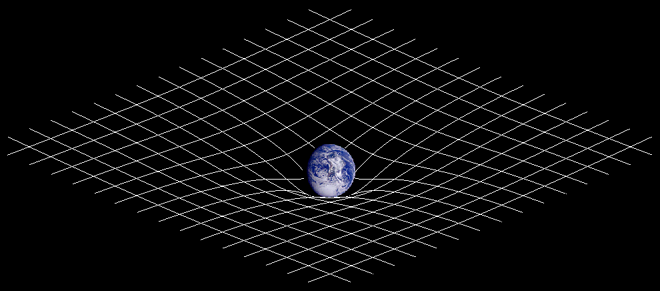Clocks run faster the higher you go. This is called gravitational time dilation.
Orbits precess in a way unexpected in Newton’s theory of gravity. (This has been observed in the orbit of Mercury and in binary pulsars).
Rays of light bend in the presence of a gravitational field. So light no longer goes in a straight line but bends when it passes by a large mass, like the sun or a large planet.
Rotating masses “drag along” the spacetime around them; a phenomenon termed “frame-dragging”. So space is not fixed, still, but it also bends around large bodies.
The universe is expanding, and the far parts of it are moving away from us faster than the speed of light.
General Relativity says so, and has been experimentally corroborated. Added to the famous E = mc2, energy and mass are equivalent and transmutable, already worked out in 1905, Einstein created a revolution in the way we see and understand the Universe.
Predictions of black holes have also been confirmed but relativity does not marry well wit Quantum Mechanics, the other revolution in the way we see the Universe, but referring to the subatomic world. The search for a unified theory is today the Holy Grail of Physics.
In the meantime the most direct modern practical application of Einstein’s theories has transformed our daily lives with the Global Positioning System, or GPS.
Einstein’s life was profoundly affected by the two World Wars of the XX Century. He was surrounded by the first one whilst developing General Relativity and being Jewish he had to emigrate from Nazi Germany in the run up to the second one. Not surprisingly he was a staunch and committed pacifist (although he upheld the right to self-defence) active in various international peace organisations and campaigns, and he also signed the Bertrand Russell – Albert Einstein Manifesto against Nuclear Weapons in 1955, just a few days before his death.






